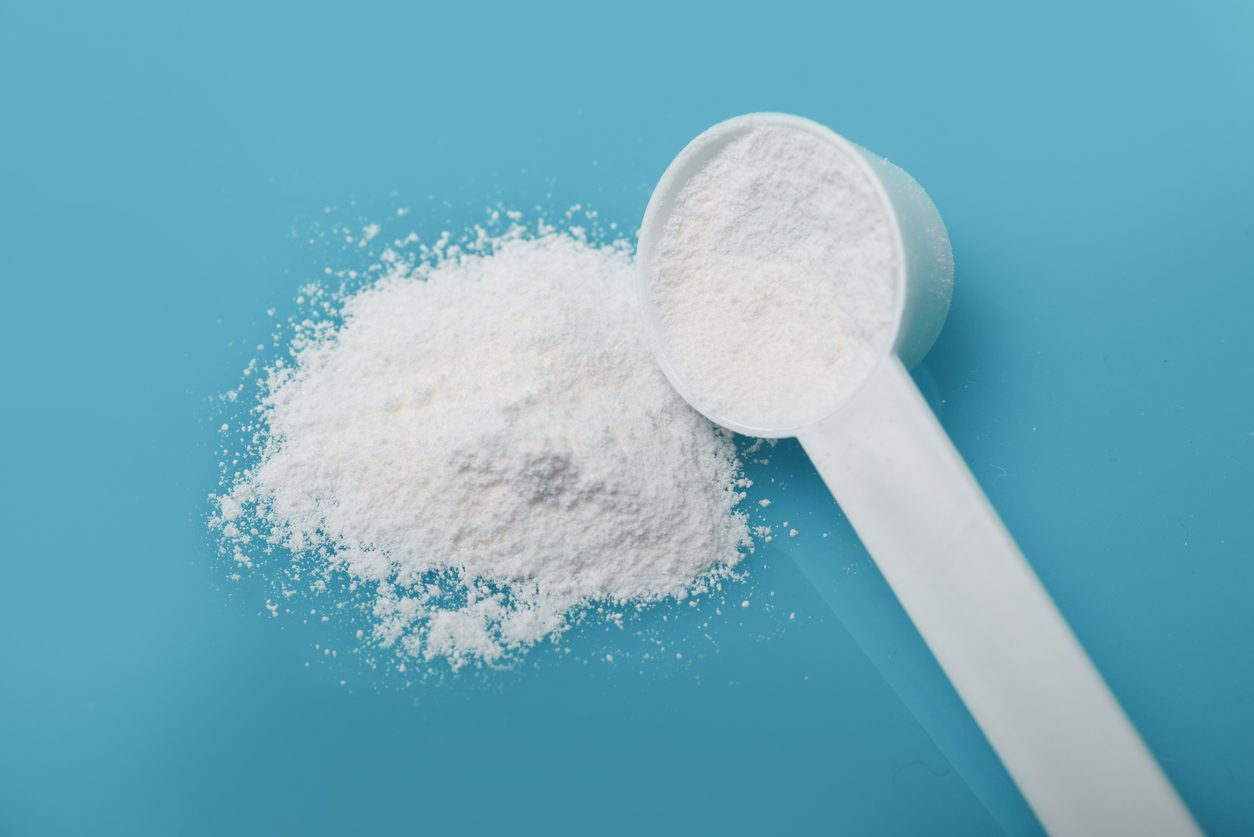In the cult classic “Idiocracy,” the population loves “Brawndo: The Thirst Mutilator” because it has electrolytes (“it's what plants crave”). The main character asks, “what are electrolytes?” to which the stupefied members of the president’s cabinet can only respond with, “it’s what plants crave.”
In today’s world, electrolytes are becoming more and more focused on hydration and performance, but what are electrolytes, what do they do, and how much do we need?
Strictly speaking, electrolytes are charged ions in solution. These can be positively charged ions (sodium, potassium, magnesium, and calcium) or negatively charged (chloride, phosphate, bicarbonate). From a biological perspective, when we talk about electrolytes, we are talking about sodium and potassium, the two main electrolytes in the body that do not have ready stores, such as calcium.
Sodium and potassium work together for nerve signaling, muscle contraction, and blood pressure. The ratio of these ions is significant, and the amount of each ion is dictated by the kidney.
What is Potassium?
Potassium, or Kalium in the original German and the reason the symbol is a “K”, is a critical ion in the body that is the primary regulator of a plethora of bodily functions. It is necessary for proper nerve conduction, bodily fluid production such as sweat, mucous, tears, and urine to name a few, and muscle contraction as a few of the functions potassium has in the body. 98% of potassium is found inside cells, which makes measuring the actual potassium in the body difficult.
Recommended Intakes
The Food and Drug Administration recommends 4700 mg of potassium per day. There is no established upper limit, so this should be the lower end of the targeted daily consumption. This amount is the daily consumption needed to lower blood pressure. While you can find potassium in food, but it is difficult to reach this daily intake. For this reason, we recommend supplementing your diet with high potassium foods and beverages to ensure you hit your daily potassium intake.
How much potassium do Americans consume?
Americans overconsume sodium, with an average consumption of 3500 mg per day, while significantly under consuming potassium at an average of 2600 mg consumed per day, according to the 2015-2016 NHANES study.
The ratio of sodium and potassium consumption is critically important. Obligatory losses, or losses under starvation conditions, are just under 200 mg per day for sodium and just over 600 mg per day for potassium. This would suggest that there should be at least three parts potassium consumed for every 1 part sodium.
Similar cardiovascular issues also support this observation in the German population. Germans consume more potassium, about 4000 mg per day, and more sodium at about 10,000 mg per day. Even though there is increased potassium consumption, the benefits are masked by the much higher sodium consumption.
To make matters more glaring, increased sodium consumption increases the rate of potassium loss as the kidneys make urine to remove excess sodium.
Thus, increasing potassium consumption to be greater than sodium consumption is needed to realize the many benefits of proper electrolyte nutritional benefits fully.
Foods Sources of Potassium
Potassium can be found in a wide variety of foods, most of which are fruits and vegetables. Examples include bananas, potatoes, apricots, avocados, grapefruit, dry beans, and milk.
Despite being found in such a wide variety of foods, it is still difficult to consume enough potassium each day with diet alone. Krampade is the easy way to supplement your diet with the potassium needed without making drastic changes to your diet and lifestyle.
High Sodium - More Than Increased Blood Pressure and Stroke Risk – and How Potassium Can Reduce Risk
It is well known that a high sodium diet, which is a diet with more than 2300 mg of sodium consumed per day, is a major component of causing high blood pressure. This is not the only consequence of having a high sodium and low potassium diet.
Even in cases where blood pressure is not increased, high sodium diets impair cardiovascular function by stiffening the blood vessels and decreasing the pumping capacity of the heart.
The kidneys are also adversely affected with high sodium diets even if blood pressure is not increased. High sodium results in the kidney not being able to properly function which is often seen with more protein in the urine.
The most important organ, the brain, is also negatively impacted by high sodium. Studies have shown that a high sodium diet impairs learning and memory. Prolonged high sodium also increases the risk of neurodegenerative disease.
Potassium is the yang to sodium’s yin. Increasing potassium consumption can slow or even reverse many of the issues that arise from a high sodium diet.
Potassium is equally well documented to have the opposite effect of sodium in terms of blood pressure, cardiovascular function, kidney function, and brain health.
In fact, foods such as Krampade 2.0, Fiber, Recover, and Complete, with more than 350 mg of potassium and less than 140 mg of sodium per serving may reduce the risk of high blood pressure and stroke, according to the Food and Drug Administration.
Adults with high blood pressure (above 120/80) are advised by many health authorities to increase potassium through their diet.
If you have any doubts, talk to your doctor about whether or not potassium supplements are right for you.

Does High Sodium Improve Athletic Performance?
When considering athletic performance, it is crucial to remember many factors, from diet to training to acclimatization to the environment, are involved.
High sodium intake leads to higher blood pressure, meaning the heart requires more energy to pump blood. This means less energy is available for exertion, decreasing endurance and increasing the time needed for recovery.
However, the exact impact of high sodium consumption has not been adequately studied.
Studies comparing low and moderate sodium consumption showed no difference in athletic ability, but the amount of sodium in sweat changes. Hence, high sodium consumption is certainly not beneficial for athletic performance and may be detrimental.
Heat stress is a more common problem, especially as the world gets gradually warmer. The typical response to combating heat has been to increase sodium intake via salt pills. This, however, might be a misguided and potentially dangerous approach.
Increased sodium intake has been shown repeatedly not to have a bearing on athletic performance in the heat.
Does High Sodium Improve Resistance to Heat Injury?
When it comes to heat injury, there is no link established between increasing sodium intake and increasing resistance to heat injury. However, there is evidence that high-sodium diets may increase the likelihood of heat injury.
A significant cohort analysis showed that elderly patients with high sodium were less likely to survive complications from a heat stroke than those with normal or low sodium levels in their plasma. In this analysis, high, but not low, or normal, sodium was an independent mortality risk factor in heat stroke patients.
Other evidence shows that low potassium is a risk factor for an increased risk of heat injury. As early as 1940, evidence has been collected that low potassium is a critical part of increasing the risk of heat stress and injury, while there is no evidence that low sodium is a risk factor.
As discussed previously, the loss of the ability to sweat is principally due to a lack of potassium, not dehydration. Bodily fluids, including sweat, requires potassium to move the fluid from the gland to the exterior.
This is why the potassium content of sweat is consistent and independent of potassium intake, while sodium content is variable and is directly dependent on sodium consumption. Sedentary behavior in the heat has an average loss of 4500 mg of potassium regardless of potassium intake. Sodium loss in sweat can be very high or very low, dependent on sodium consumption.
To have a higher resistance to heat stress, it is critical to have sufficient potassium in your diet and to limit sodium. The likely scenario is to have sufficiently high potassium to overcome low sodium, which Krampade makes easy to do without sacrificing current dietary habits.
Potassium Improves Muscle Function, Even in Non-Athletes
When talking about muscle function, we typically think about athletic performance. Having enough potassium in the muscles is imperative for athletic performance and recovery, but what about those who are not as active?
Low potassium has repeatedly been proven to result in muscle cell degradation and death. Typically, this starts with a loss of striation and necrosis of the tissue. The loss of function is typically restored by adding more potassium to the diet.
The loss of proper muscle function seen in case studies of human patients has been repeated in multiple animal models.
These animals can do significantly less work when potassium is depleted, have much less blood flow into the muscles, and overheat much more rapidly. These observations closely follow how low potassium affects muscle function, athletic ability, and increased susceptibility to heat stress.
What Causes a Potassium Deficiency?
Many things can cause hypokalemia (low potassium). Prescription medications that increase urine production are the most common causes of increased potassium loss. These medications, also known as water pills or diuretics, are frequently prescribed to people with high blood pressure or heart diseases.
The vast majority of people do not consume enough potassium in their diets as less than 25% of men and 1% of women get enough potassium in their daily diet.
Normal potassium loss is also underappreciated by most people. Established potassium losses range from 4500 mg per day for those that are inactive to 5600 mg per day for highly active individuals in hot conditions. These levels are far below the average of 2600 mg consumed each day.
Increasing daily potassium consumption is critical for overall health and Krampade is the easy solution to this problem.
Sodium, But Not Potassium, Loss in Sweat is Variable
Contrary to popular belief, the sodium in sweat is variable and depends on sodium consumption. Potassium, on the other hand, is a constant and is needed for sweat secretion, while sodium is not.

First published in 1949, fit young men living in tropical conditions had no change in athletic performance when their diet changed from 6 g sodium per day to 1 g per day. The only change was the amount of sodium in their sweat and urine.
This observation has been repeated in multiple studies since. Therefore, replacing what is lost in sweat is a misnomer, as the amount of sodium lost in sweat is directly linked to the amount consumed. Higher sodium had harmful effects on the cardiovascular system and no impact on athletic performance.
The potassium content in sweat does not change, and the loss is much higher than is commonly known. Even in low activity in hot conditions, the average potassium loss is 4500 mg, and high activity, such as US Army basic training, has been measured at an average of 5600 mg potassium loss per day regardless of changes in dietary potassium intake.
Loss of potassium, not sodium, results in severely impaired athletic ability and adverse effects such as cramps and rhabdomyolysis (muscle cell death, typically via necrosis or a lack of blood flow).
Increasing Potassium in the Diet Improves Cardiovascular Health
When researching potassium online, there is typically a thought that high potassium will cause heart arrhythmias. While this is true about very, very high amounts of potassium, increasing potassium intake is typically beneficial for cardiovascular health.
It is important to note that the cardiac, or heart, muscle radically differs from skeletal muscle in potassium regulation. The standard dogma is that high dietary potassium results in an arrhythmia.
There is considerable evidence that low potassium can cause arrhythmia, which is potentially deadly. It is important to note that physical training significantly reduces risk in any case, so exercise is essential.
High blood pressure is the most common risk factor for cardiovascular incidences. A high potassium diet reduces blood pressure, especially in people predisposed to salt-sensitive high blood pressure. Extensive studies among the African-American population show that increasing potassium consumption can significantly lower blood pressure. Repeated studies show that increasing potassium intake lowers blood pressure and the risk of later consequences, such as stroke.
Like skeletal muscle, only increasing potassium intake can prevent cardiac cell necrosis (death), while increasing sodium does not. Increasing sodium intake and lowering potassium intake increases the likelihood of cardiac cell death.
Hence, the potassium in Krampade may help improve cardiac health by simply increasing potassium intake and compensating for our high sodium diet by supplying enough potassium to lower blood pressure and help cardiac muscle cell function, similarly to how the high potassium in Krampade helps skeletal muscle function.
Low potassium Linked to Kidney Dysfunction
Kidney function decreases over time, which is accelerated by high blood pressure. As discussed, having high potassium, low sodium diet lowers blood pressure. Low potassium further degrades kidney health as low potassium results in hyperplasia or a high turnover of cells resulting in a leaky, low-functioning kidney.
Short-term potassium loss and subsequent kidney damage often result in the inability of the kidney to concentrate urine. This was seen in 1940 in the British Army stationed in modern Iraq when the soldiers had an insatiable thirst and urinated heavily. This was later measured in miners in similar environmental conditions, and there was an inability to concentrate urine, meaning increased water loss in the heat. By simply adding potassium to the diet, this can be reversed.
Anatomically, low potassium quickly kills the endothelial cells lining the kidney, which results in a rapid rate of division and lesions forming. This largely explains the inability to concentrate urine and how increasing potassium can quickly restore normal function.
Kidney stones are excruciating, and these formations are reduced primarily by increasing potassium consumption and fluid intake.
Chronic kidney disease is a common ailment affecting about 15% of the adult American population. A clinical trial examining the potassium content showed that all patients with chronic kidney disease had low potassium levels in their tissues. However, their serum levels were normal and increased sodium in their tissues. This common denominator indicates that maintaining proper potassium levels inside cells is vital for long-term kidney health. It also shows in another population that serum potassium is not a good indicator of potassium levels.
The potassium in Krampade helps increase potassium in your diet and may benefit kidney health in the short and long term.
Do Sodium and Potassium Affect the Brain?
Muscles, nerves, and glial cells use sodium and potassium to transmit signals affecting many functions, from behavior to motor coordination. While we know that there are effects, we do not understand exactly how things work.
High sodium is detrimental to cognition and has been more widely studied than potassium. High sodium decreases cognition by indirectly restricting the blood flow in the brain. This is done via an increase in a molecule called interleukin-17 (IL-17) which eventually inhibits nitric oxide production. Essentially, the brain cannot alter blood flow efficiently to feed parts that need more energy.
Potassium in the brain is uniquely distributed. Much more (about 2.5 times) potassium is found inside the mitochondria, the cell's energy production unit. It is unknown why this is, but the brain's mitochondria function is unique compared to other tissues.
Low potassium impairs chicks' learning and can alter behavior in various animal models. This has been difficult to study in humans, but a small study has been done on women suffering from premenstrual syndrome.
Two small studies examined how potassium supplementation affects the signs of premenstrual syndrome. In one study, 8 of 11 women in their 50s had their PMS symptoms resolved, and another, with seven women with severe PMS, had their PMS symptoms stopped by their 4th menstrual cycle while taking daily potassium supplementation.
While these are not conclusive, the evidence that increasing potassium consumption and decreasing sodium consumption is largely beneficial to cognition and, perhaps, mental health is slowly being shown.
Potassium May Help Reduce Risk of Diabetes
According to the Centers for Disease Control, about 96 million Americans over 18 have prediabetes -- roughly 38% of the total population. These are estimates as the number of people aware of their status of having prediabetes is only 19%.
Several extensive clinical studies have shown that increasing potassium consumption significantly lowers the likelihood of prediabetics developing type 2 diabetes. Increasing potassium consumption lowers the amount of blood sugar in those with prediabetes. People with type 2 diabetes typically have lower amounts of potassium in their urine in their diet.
Hence, increasing potassium intake is an essential component of working to prevent the development of type 2 diabetes, especially for those with metabolic syndrome or prediabetes. Krampade is an easy way to get needed potassium inexpensively and conveniently.
Potassium May Help Increase the Effectiveness of Dieting and Weight Loss
Nearly 42% of Americans are considered obese. Many try various diets to try and lose weight, spending about $33 billion per year on various products. These work to varying degrees, but why does the same protocol work well for some and not others?
A large study examined this variability and found that the difference in success came down to the potassium content in a calorie-restricted Mediterranean diet. Those with higher than average potassium consumption lost higher than average weight when consuming similar calories over a year. The potassium consumption increase was the dieters' primary differentiator in weight loss.
A strong correlation exists between overall increased potassium in the diet and a reduced risk of developing obesity, metabolic syndrome, and diabetes. High potassium consumption is also correlated with decreased body fat, while high sodium is correlated with increased body fat. The larger the sodium content of the diet is compared to potassium, the higher a person’s body mass index (BMI), or, in other words, the rate of obesity. While high sodium could be an indicator of an overall unhealthy diet, the fact that high potassium is the main differentiator in the effectiveness of dieting shows that increasing potassium intake could help with overall weight management.
A healthy diet and exercise are the main drivers of maintaining a healthy weight. Still, increased potassium in the diet is the main difference between those with similar diets and the effectiveness in losing weight. Hence, the potassium in Krampade can decrease the sodium-to-potassium ratio quickly and inexpensively. This may help a dieter see more success in managing their weight.
What Happens If I Take Too Much Potassium?
Too much potassium can be a risk for people with a kidney disorder. This is because your kidneys become less capable of removing potassium from your blood, which can upset your body's balance of potassium and sodium. However, because your body naturally cleans up through potassium excretion, oftentimes, these problems can solve themselves quickly.
Taking too much potassium in a healthy person, typically over 8000 mg in a single serving, results in an osmotic diarrhea. This is the same effect that is used during a colonoscopy prep to clean the bowels. The other sign of too much is tingling in the lips and temporary muscle weakness. With a halt to consumption, these resolve quickly as the kidney moves excess potassium into the urine.
High potassium (hyperkalemia) is often not a sign of high blood pressure. High potassium levels can cause nausea, fainting, and a weak, irregular, or low pulse.
Before you take any potassium supplements, consult your doctor. Ask your doctor before you try salt substitutes, as potassium salts can increase potassium in those with certain conditions or who are taking ACE inhibitors to lower their blood pressure.
Which is better: potassium chloride or potassium gluconate?

Potassium chloride is a popular potassium salt. However, you should know the differences between potassium chloride and potassium gluconate.
Both potassium chloride and potassium gluconate can be used to treat hypokalemia. Potassium gluconate has less elemental potassium than potassium chloride. Hypokalemia is not treated with potassium citrate, but it is an excellent cure for kidney stones.
You can take several potassium supplements to treat and prevent hypokalemia. Hypokalemia can be managed with potassium chloride as a first choice. There are other types of potassium, such as potassium gluconate or potassium bicarbonate. However, if you're looking to treat hypokalemia, we recommend you stick with potassium chloride.
Talk to your doctor if you require a potassium supplement.
Maintain More Potassium than Sodium in Your Diet
The human body evolved in a high-potassium, low-sodium world. The body is designed around saving sodium and wasting potassium, which has been demonstrated in repeated studies. The obligatory loss, or the loss under extreme starvation conditions, the loss of sodium is just under 200 mg per day, while potassium is three times as much at about 600 mg per day. Hence, ideally, we should consume at a minimum twice as much potassium as sodium, which is why the Food and Drug Administration has an upper limit recommendation of 2300 mg per day for sodium and a lower limit recommendation of 4700 mg per day for potassium.
Unfortunately, very few Americans get enough potassium, with only 1% of women and about 25% of men getting enough, while there is an overconsumption of sodium. It isn’t just Americans that consume far too much sodium and not enough potassium. This dietary issue is a problem throughout the world.
Americans consume about 3.4 grams of sodium per day and about 2.6 grams of potassium. Germans consume what we would assume is a healthy amount of potassium at 4 grams but also consume a tremendous 10 grams of sodium per day. The health benefits of the increased potassium are washed away by the increased sodium, as Germans have similar cardiovascular problems as Americans. Further emphasizing the importance of the sodium-potassium ratio is Japan, the nation that leads the world in the number of women experiencing menstrual cramps, consumes a paltry 2 grams of potassium with 10 grams of sodium.
Krampade is the simple solution to consume more potassium than sodium in your diet and reap the benefits without significant changes to current sodium consumption. With 2000 mg per serving, two servings per day are enough for the average American to consume nearly double the potassium to sodium on average.
Krampade is an excellent product that quickly and inexpensively helps you properly balance your electrolyte intake.

